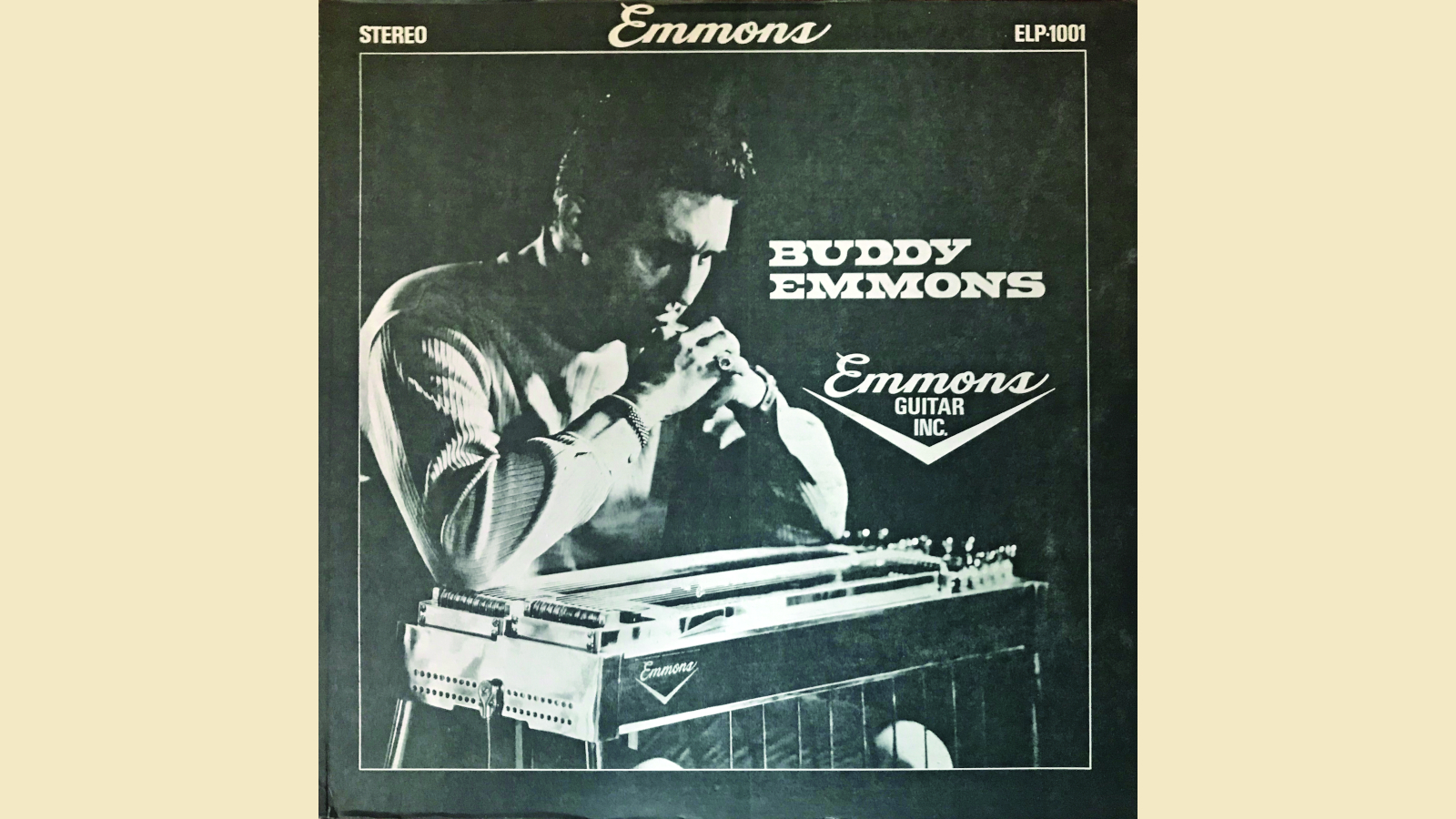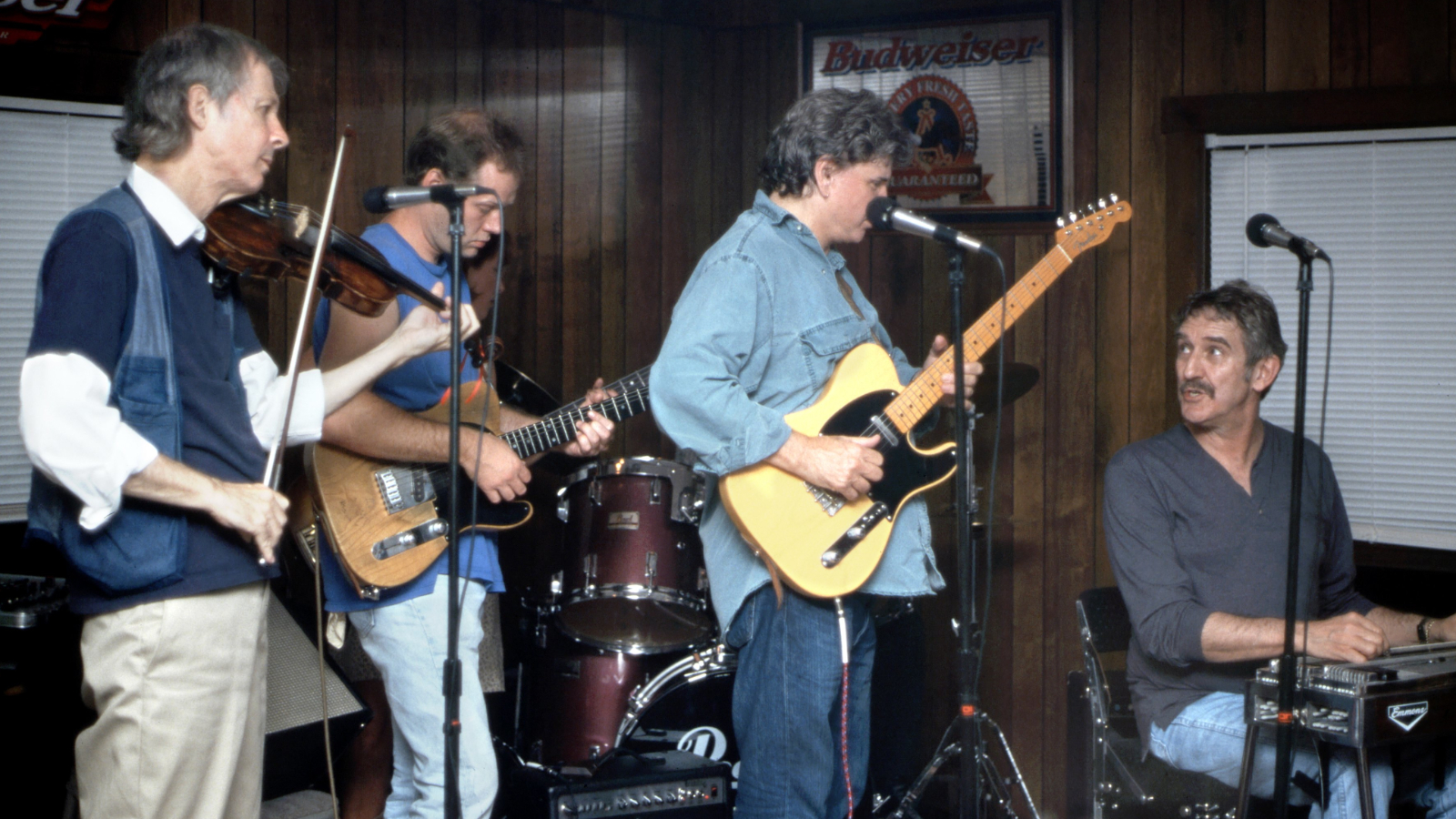Known as the Black Album, Celebrated Pedal Steel Innovator Buddy Emmons’ ‘Emmons Guitar Inc.’ Is Shrouded in Mystery
Jim Campilongo explains why this enigmatic record remains a hot country jazz favorite

Most collectors know Emmons Guitar Inc. as the Black Album, a fitting name for a record shrouded in mystery.
It was released in the late ’60s, or as late as 1971, and distributed by the Emmons Guitar label through music stores, specialty record shops and steel-guitar retailers.
Buddy Emmons was born in Indiana in 1937 and began playing lap steel at age 11. He joined Little Jimmy Dickens while still young and went on to make significant contributions to pedal-steel guitar and country music, recording with Ray Charles, Ernest Tubb, Ray Price, Roger Miller, the Everly Brothers, Danny Gatton and many others.

With collaborator Shot Jackson, Buddy made innovations to pedal-steel mechanics, leading to the signature Sho-Bud model.
He won the Academy of Country Music’s Best Steel Guitarist award nine times and was honored by the Country Music Hall of Fame.
It’s selling him short to narrow his body of work down to a few LPs, but Emmons Guitar Inc., the compilation Four Wheel Drive and his work with Ray Price made a huge impression on me.
He incorporated jazz and country seamlessly, and his counterpoint and voice leading seemed to follow the principles of Bach.
His harmonic/melodic sophistication within the context of country music paved the way for me to realize my potential as an instrumentalist.

Unfortunately, little information is available about Emmons Guitar Inc.
Its lineup includes pianist Bill Pursell, bassist Chuck Sanders and drummer Marty Allred.
According to the liner notes, Buddy invited some of his virtuoso friends to the session, and the Mount Rushmore of steel-guitar greats he convened includes Curley Chalker, John Hughey, Jimmy Day, Roy Wiggins and Ed Hamilton.
A standout track for me is Buddy’s own composition “Blue Jade.” Using the E9 neck, he plays a lovely pentatonic melody while making extensive use of chiming harmonics. His performance is dynamic while it retains a mood of serene beauty.
He also revisits Price’s version of Willie Nelson’s “Nightlife,” a tune that made Buddy’s reputation as an innovator, seamlessly incorporating jazz substitutions while keeping it unmistakably “country.”
I’ve tried to incorporate these ideas in my playing, but I never get close to approaching his musical heights
Jim Campilongo
The rest of the record walks that line with exceptional hot country jazz composed largely by Buddy.
The sound also takes surprising detours, such as the whimsical echo/delay on “Witches Brew.” But my favorite track is the traditional Irish tune “Danny Boy,” a heart-wrenching tour de force on which Buddy exhibits his total command of the E9 neck.
His dominant cadences ascend majestically, incorporating augmented 7ths embellished with daring # 9 and b9 movements. I’ve tried to incorporate these ideas in my playing, but I never get close to approaching his musical heights.
As magical as a six-string guitar can be, it pales in comparison when I try to imitate a pedal steel, especially as played by Buddy Emmons.
Special thanks to BuddyEmmons.com and Joe Goldmark for their help with this article.
Get The Pick Newsletter
All the latest guitar news, interviews, lessons, reviews, deals and more, direct to your inbox!
Jim Campilongo has 14 critically acclaimed instrumental records available on vinyl, CD and digital download here.
“We’re Liverpool boys, and they say Liverpool is the capital of Ireland.” Paul McCartney explains how the Beatles introduced harmonized guitar leads to rock and roll with one remarkable song
"When they left town, I went to the airport and got to meet Ritchie, and he thanked me for covering for him." Christopher Cross recalls filling in for a sick Ritchie Blackmore on Deep Purple's first-ever show in the U.S.










